Apple’s packaging always notes that its products are designed in California, but that doesn’t mean they’re manufactured there. Answering the question of where the iPhone came from is not easy. This guide will introduce you where are the iPhone parts suppliers.
1. Assembly and Fabrication
There are two key concepts that sound similar but are different when it comes to understanding where Apple manufactures its devices: assembly and manufacturing.
Manufacturing is the process of making iPhone components. Although Apple designs and sells the iPhone, it does not manufacture its components. To supply individual parts, Apple relies on manufacturers around the world. Manufacturers specialize in specific products—camera specialists make lenses and camera components, screen specialists make displays, and so on.
A finished, usable iPhone is made by combining all the individual components made by specialized manufacturers.
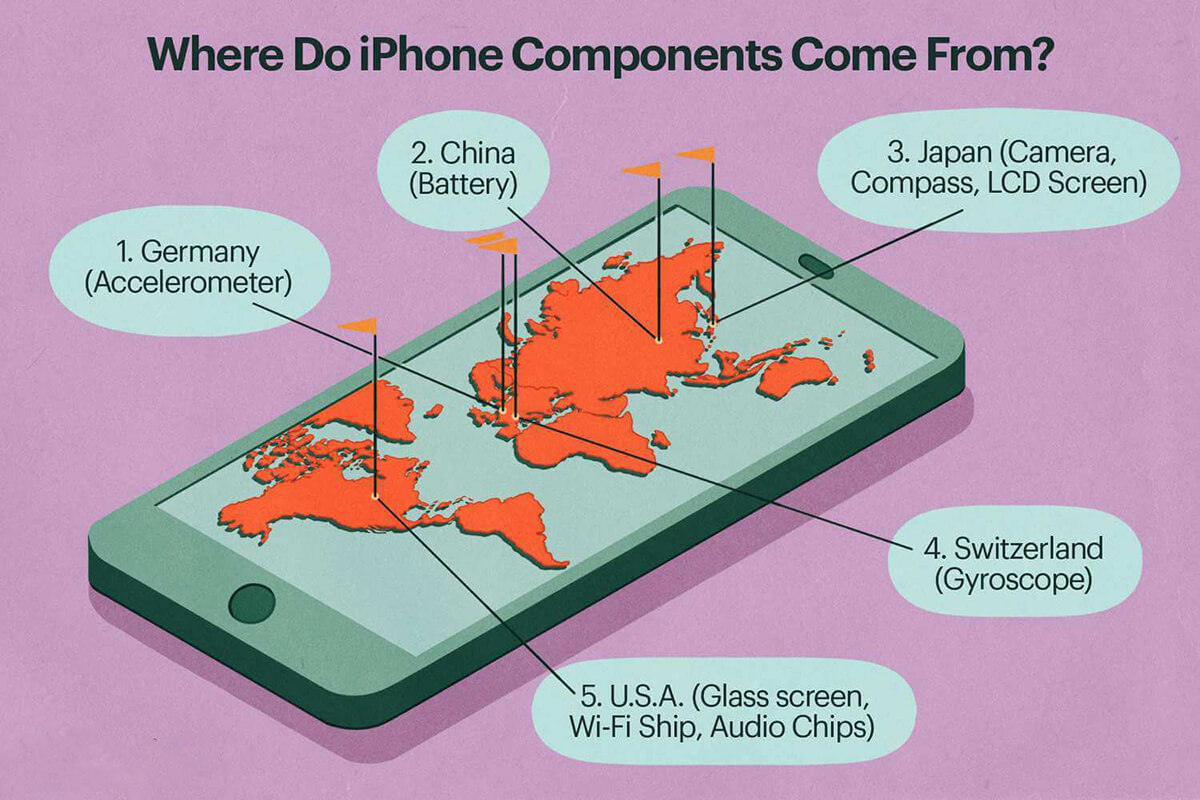
2. iPhone parts suppliers makers
Because of the hundreds of individual components in every iPhone, it’s impossible to list every manufacturer’s product used on that phone. Because sometimes a company manufactures the same components in multiple factories, it can be difficult to discern exactly where those components were produced.
Here are some of the key or interesting suppliers for the iPhone 5S, 6, and 6S and where they are located:
- Accelerometers: Bosch Sensortech, headquartered in Germany, with branches in the US, China, Korea, Japan, and Taiwan
- Audio chips: Cirrus Logic, headquartered in the United States, with branches in the United Kingdom, China, Korea, Taiwan, Japan, and Singapore
- Batteries: Samsung, headquartered in South Korea with branches in 80 countries
- Battery: Sunwoda Electronics, headquartered in China
- Camera: Qualcomm, headquartered in the United States, with subsidiaries in Australia, Brazil, China, India, Indonesia, Japan, South Korea, and more than a dozen locations in Europe and Latin America
- Cameras: Sony, headquartered in Japan with branches in dozens of countries
- Cellular chip: Qualcomm
- Compass: The Japanese company AKM Semiconductor has branches in the US, France, UK, China, Korea, and Taiwan
- Glass screen: Corning, headquartered in the United States, has branches in Australia, Belgium, Brazil, China, Denmark, France, Germany, Hong Kong, India, Israel, Italy, Japan, Korea, Malaysia, Mexico, Philippines, Poland, Russia, Singapore, South Africa, Spain, Taiwan, Netherlands, Turkey, United Kingdom, and United Arab Emirates
- Gyroscope: STMicroelectronics. Headquartered in Switzerland with branches in 35 countries
- Flash memory: Toshiba, headquartered in Japan with operations in more than 50 countries
- Flash memory: Samsung
- LCD: Sharp, headquartered in Japan with branches in 13 countries
- LCD: LG, headquartered in South Korea with branches in Poland and China
- A-series processor: Samsung
- A-Series Processors: TSMC, headquartered in Taiwan, with branches in China, Singapore, and the United States
- Touch ID: TSMC
- Touch ID: Xintec. Headquartered in Taiwan.
- Touch screen controllers: Broadcom, headquartered in the United States, with branches in Israel, Greece, the United Kingdom, the Netherlands, Belgium, France, India, China, Taiwan, Singapore, and South Korea
- Wi-Fi chip: Murata, headquartered in the United States, with branches in Japan, Mexico, Brazil, Canada, China, Taiwan, South Korea, Thailand, Malaysia, Philippines, India, Vietnam, Netherlands, Spain, United Kingdom, Germany, Hungary, France, Italy, and Finland
Once all of these iPhone parts are manufactured, they are shipped to the iPhone assembler in custom paper tube packaging of electronic. Furthermore, Apple’s new iPhone 13 Pro is a remarkable feat of international collaboration.
The iPhone’s battery is developed by Chinese company Sunwoda Electronics, the display screen is developed by South Korea’s Samsung and LG, and the glass case is developed by American Corning Corporation. The iPhone is a joint effort of global companies. The chips are made by a third-party manufacturer, the flash memory is made by Kioxa in Japan, and the DisplayPort interface is made by NXP Semiconductors.
The iPhone is the cash cow for Apple’s entire organization, with about half of the company’s turnover driven by the iconic product. But like other tech giants, Apple has been looking for ways to diversify in order to stay competitive. In 2021, the company’s entertainment divisions, iTunes and Apple TV, accounted for 19% of sales. Their smart speakers and wearables such as the Apple Watch have also seen growth in recent years. At the same time, the share brought by Mac and iPad remained relatively stable at about 10%.
The iPhone’s popularity varies by country, with Apple’s best-selling product particularly favored in Australia, Switzerland, and the United States, according to the survey’s data.
3. iPhone assembler
Parts made by these companies around the world are ultimately sent to just two companies to be assembled into iPods, iPhones, and iPads. Those companies are Foxconn and Pegatron, both headquartered in Taiwan.
The official name of the company is Hon Hai Precision Industry Co., Ltd. Foxconn is technically the company’s trade name. Foxconn is Apple’s oldest partner in making these devices.
Most of Apple’s iPhones are currently assembled in Shenzhen, China, although Foxconn has factories in countries around the world including Thailand, Malaysia, the Czech Republic, South Korea, Singapore, and the Philippines.
4. Apple’s supply chain
Apple is one of the most valuable companies in the United States, with a market cap of over $2.75 trillion as of March 2022. 1 Much of its success comes from its ability to be a true innovator in personal technology. Apple devices like the iPhone, iPad, Mac, iPod, and Apple Watch are among the best-selling products because of their quality, design, and functionality.
However, to achieve this great feat, Apple doesn’t just rely on its own manufacturing. It relies on more than 200 suppliers to source assembly components. Suppliers are closely monitored by Apple.
One of the most efficient supply chain management systems on the market today is a result of those relationships. The company publishes an annual progress report outlining its supplier relationship efforts and a list of the top 200 suppliers, who account for 98 percent of its purchases. Some of the most prominent iPhone parts suppliers are discussed below.
1) Taiwan
Taiwan is one of Apple’s largest parts supplier territories, but that’s a bit of a smokescreen.
#1. Foxconn (HNHPF)
Hon Hai Foxconn is one of the main reasons why Apple has a presence in Taiwan. Foxconn is Apple’s largest and oldest supplier. The company is headquartered in Tucheng, New Taipei City.
However, although Foxconn is headquartered in Taiwan, it is generally considered to be Apple’s largest Chinese supplier due to its large number of suppliers in China. In 2018, Foxconn had 35 supplier locations serving Apple from Taiwan, China, India, Brazil, Vietnam, and the United States, with 29 of these 35 locations located in China.
By 2021, Foxconn has also helped Apple set up 1 production base in India, 1 production base in Brazil, 8 production bases in mainland China, and 1 production base each in Texas and Vietnam. base.
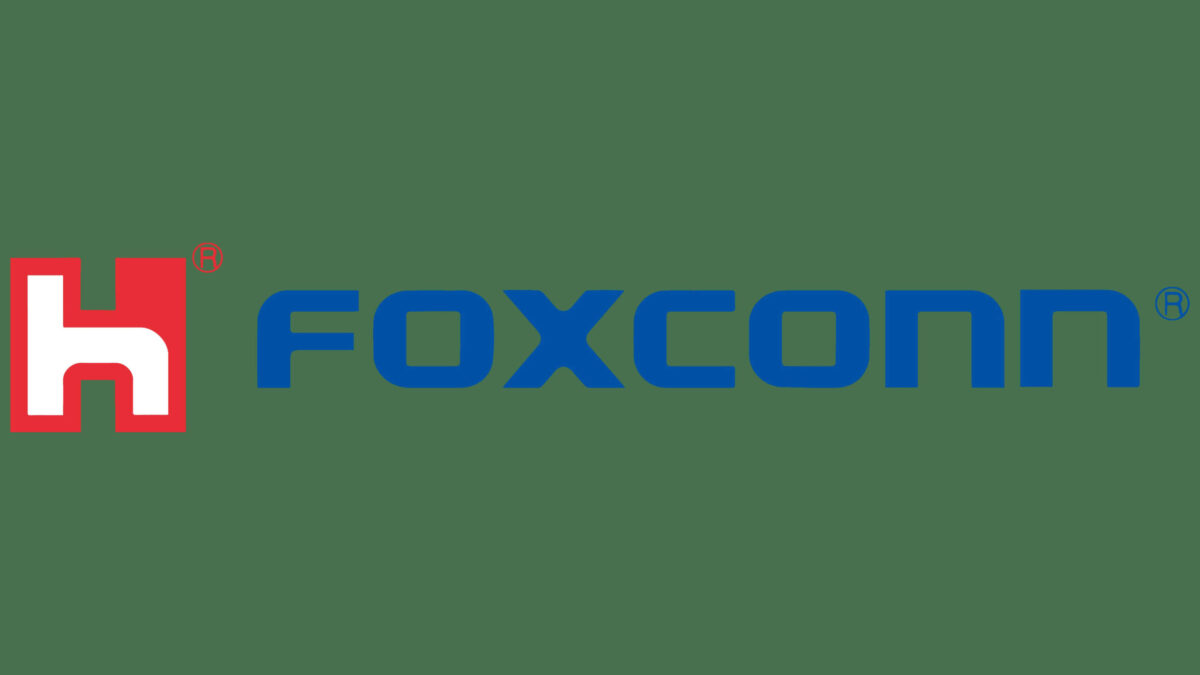
#2. Wistron
Wistron is another Taiwanese company that is also helping Apple enter India. Wistron has four supplier locations, two in China, one in India, and one in Texas. Wistron’s focus in India is on printed circuit boards for iPhones.
#3. Pegatron
Pegatron is another company that has rounded out its product line in Taiwan. Its headquarters are in Taiwan, and only one Taiwanese supplier is located in Taoyuan. Three of Pegatron’s other nine bases are located in China, while others are located in Australia, the Czech Republic, Japan, South Korea, Singapore, and the United States. Pegatron, like Foxconn, offers iPhone assembly services.
2) China
China is Apple’s most important iPhone parts supplier in the global market. The 2021 supplier list shows that the share of suppliers from China and Hong Kong is growing, surpassing that of the United States and Japan. By geography, China accounted for 156 of the 615 production facilities. However, Apple has expressed some concerns about its dependence on China in light of the 2020 coronavirus outbreak and the Trump administration’s new tariff rules.
#1. Goertek
Goertek and Luxshare Precision are two Chinese companies that have been on the radar of Apple suppliers. The two companies agreed to set up a production base in Vietnam to improve the cost efficiency of Airpod manufacturing. There are four supplier locations for Goertek, three in China and one in Vietnam. Weifang, China, is the company’s headquarters.
#2. Luxshare
Luxshare also cooperates with Apple to produce Airpods. It has four iPhone parts supplier locations, three in China and one in Vietnam.
3) United States
Although Apple relies heavily on international supply chains, it is still heavily dependent on US companies, including 3M (MMM), Broadcom (AVGO), Qualcomm (QCOM), Intel (INTC), Jabil (JBL), On (ON), Micron ( MU) and Texas Instruments (TXN). Other U.S. companies include Qorvo (QRVO), Skyworks (SWKS), and Corning (GLW). 2
#1. Qualcomm (QCOMM)
Qualcomm and Intel are making headlines in the US with their bitter legal battle. Nasdaq-listed Qualcomm is a global leader in semiconductor, mobile, and telecommunications products and services. It is understood that the company supplies Apple with a variety of electronic components, including envelope power trackers, baseband processors, power management modules, and GSM/CDMA receivers and transceivers.
These are various instruments used in device power management systems and mobile signal transmission. Qualcomm also provides the necessary modem technology for Apple devices.
However, modem technology is at the heart of the 504 dispute between Apple, Intel, and Qualcomm. Intel’s smartphone modem business has been acquired by Apple. This led to a lawsuit by Qualcomm, which resulted in Qualcomm maintaining the modem manufacturing relationship even after the Intel acquisition.
The company is known for powering chips that power mid-range and high-end Android devices. It also makes wireless technology chips. Apple sources modem chips from the company, while also licensing some patented technology for its chip design and component requirements.
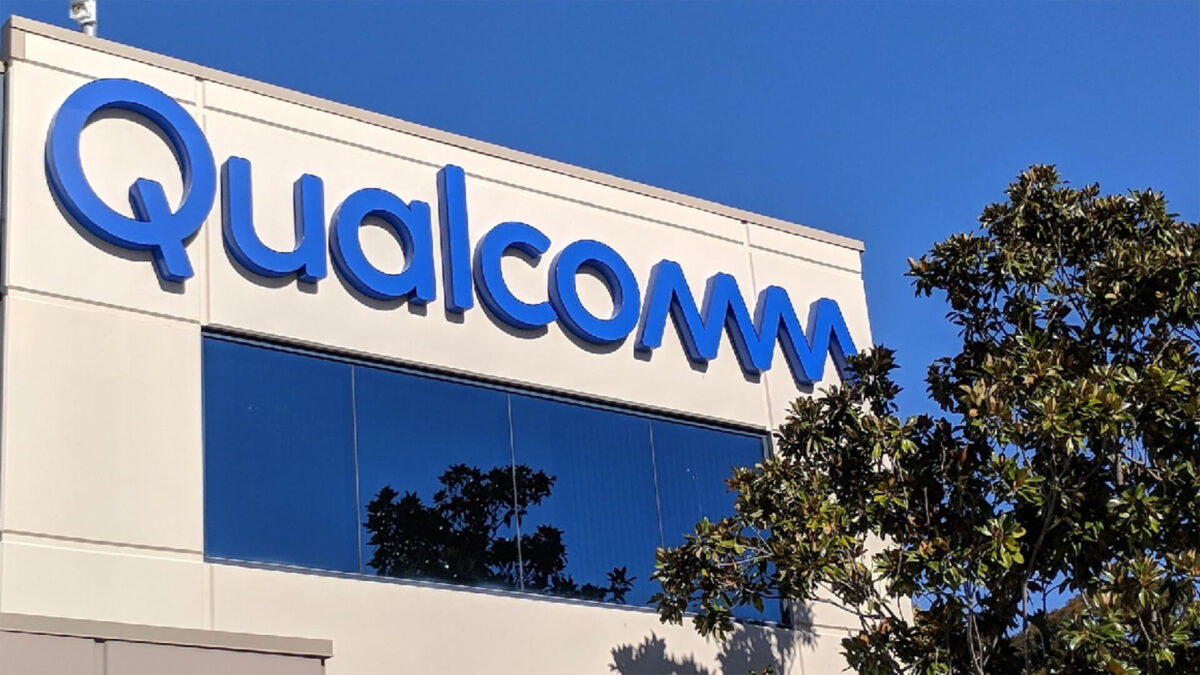
#2. Intel (INTC)
The majority of Apple’s smartphone modem business was acquired by Intel in July 2019. 5 With this acquisition, Apple expands its patent ownership and develops a strong plan for 5G development. In addition, after the acquisition, Macs use Intel processors, but the transition to Apple chips in Mac computers began in late 2020.
In the 2021 supplier list, Intel reported 10 iPhone parts supplier locations, four of which are located in the United States and others in China, Ireland, Israel, Vietnam, and Malaysia.
4) Other countries
Below are some iPhone parts suppliers of Apple production in other countries.
#1. Murata Manufacturing Co., Ltd. (MRAAY)
Murata Manufacturing Co., Ltd. is headquartered in Kyoto, Japan. The company supplies Apple through 18 manufacturing facilities located in Malaysia, Japan, Taiwan, Thailand, Vietnam, China, and Singapore. In Japan, it has 10 iPhone parts supplier sites.
Apple and Samsung are the two major customers of Murata Manufacturing Co., which purchase ceramic capacitors from the company. These electronic components are used to control the flow of electricity in electronic equipment.
#2. Samsung
Samsung is headquartered in South Korea. It provides several components, including flash memory for storing data content, mobile DRAM for multitasking various applications in the device, and an application processor responsible for controlling and keeping the device running.
Despite being Apple’s competitor in the mobile phone market, Samsung has used its supplier status to reduce its own component manufacturing costs through mass production.
Samsung Electronics semiconductor unit supplies NAND flash memory and DRAM chips used in mobile consumer electronics devices and some of Apple’s personal computer products. Samsung is also a former contract manufacturer of some A-series and W-series chips.
5. Supplier relations
Apple is known to have one of the best-managed supply chains in the world. Because of its global reach and stature, the tech giant can demand high-quality products from suppliers. Apple, for instance, sourced “tactical engines” for the iPhone 7 from Nidec Corp. after one of its Chinese suppliers proved unreliable.
Apple has hundreds of suppliers willing to abide by the terms Apple dictates. Additionally, Apple can focus on designing great products that offer great features and are easy to use by outsourcing its supply chain and assembly operations.
On the other hand, being associated with a brand like Apple can be a huge boon for supplier companies. In addition to small new companies that likely get most of their business from Apple, even big players like Samsung use the relationship to their advantage. As mentioned above, Samsung continues to compete with Apple in the mobile phone market.
However, the large number of orders from Apple has enabled Samsung to increase mass production, thereby reducing the manufacturing cost of its own mobile phone components. Another advantage for suppliers is Apple’s reputation for innovation.
Regardless of how specific products perform, despite missteps, Apple is expected to introduce new products on a regular basis and there is great anticipation for them. In a way, this protects Apple suppliers, who will continue to see new demand for their goods and services.
However, it should be noted that failure to please Apple could spell doom for the small and medium-sized suppliers whose business is based on sales of Apple products. Apple can replace suppliers if they cannot maintain high-quality products at the right price.
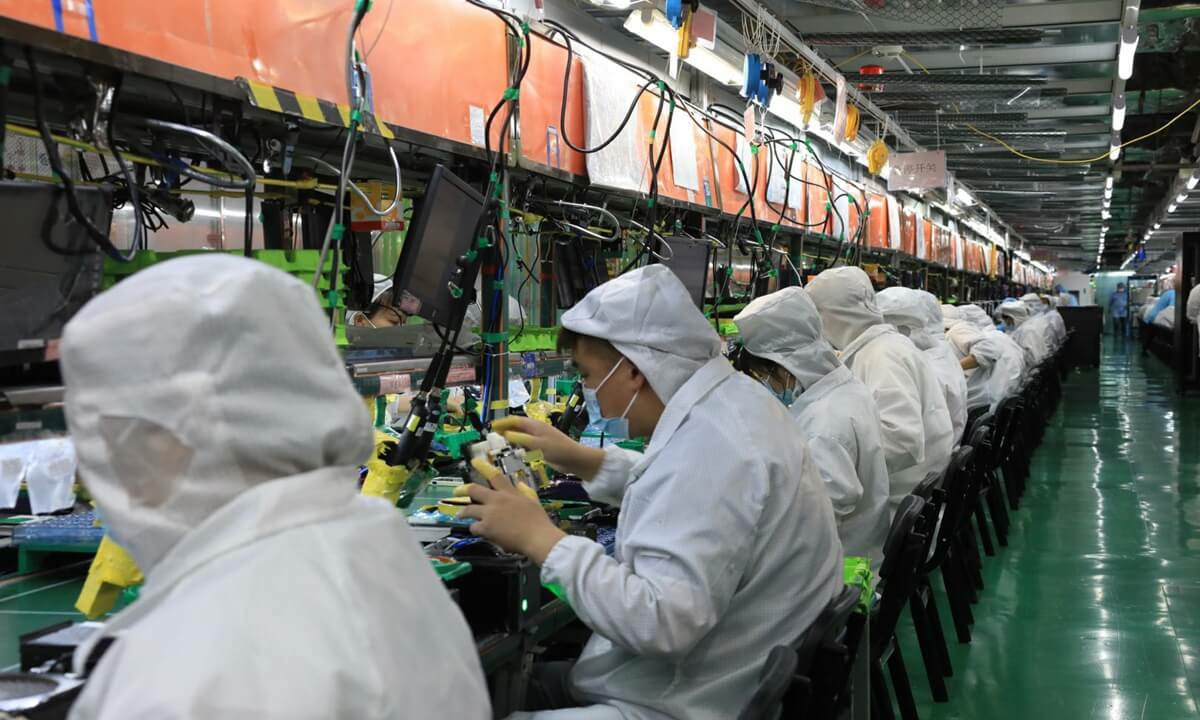
6. Conclusion
Apple needs suppliers, and suppliers need Apple. It’s a streamlined relationship that’s often mutually beneficial but can sometimes create tension. Suppliers are mostly focused on Apple and its overall market performance.
Market analysts often use supplier companies’ financial reports to forecast sales of Apple products, and investors often turn to Apple’s underlying suppliers for insights into Apple’s performance and for more granular independent investment opportunities.

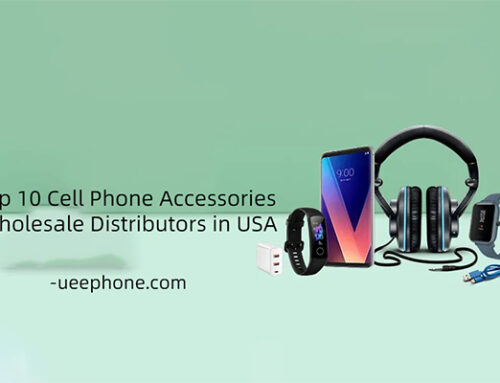
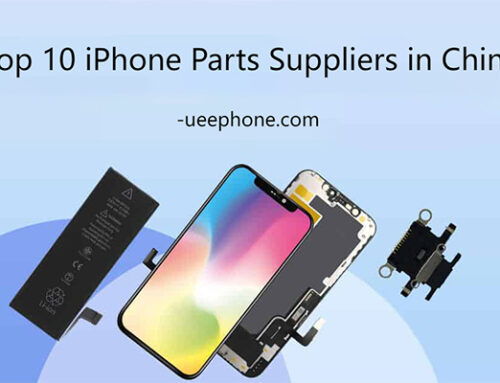


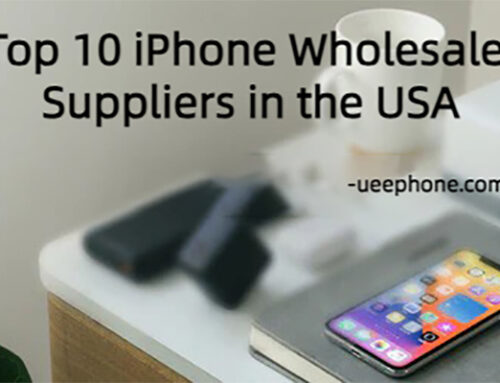
Leave A Comment